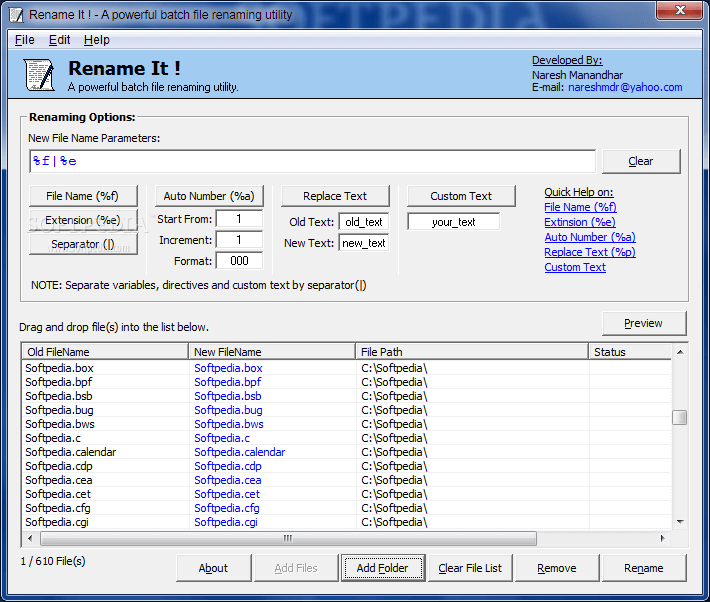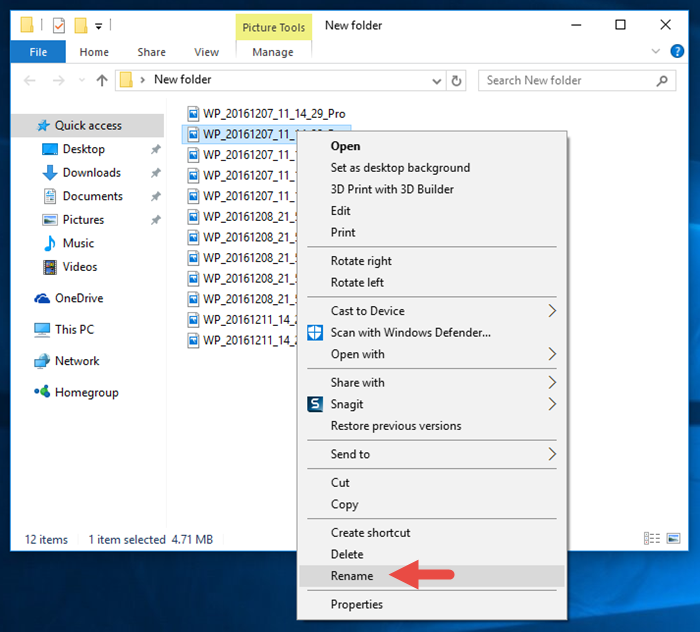

Type a new name for the file and then hit Enter or click somewhere else in the window. You’ll see that all the files remain selected, but the first one in the group gets its name highlighted so you can type a new name. When you’ve got the files selected, use one of the rename commands-the button on the Home menu, the command on the context menu, or just press F2. Start by selecting a bunch of files-you can hold down the Ctrl key to select multiple files at once, or Shift to select a range of files.

If you’re renaming a bunch of files in the same folder and those files don’t need completely different names from one another, Windows provides an easier way to rename those files in batch. Keep hitting Tab and typing names this way and you can easily rename all the files in a folder if you’re so inclined. Here’s where things get interesting: you can also hit the Tab key to automatically select the next file name in the folder so that you can immediately begin typing a new name for it.

Right-click the file and then select “Rename” on the context menu.Click to select file and then click the name of the selected file.Click to select the file and then click the “Rename” button on the Home menu.If you’re using your mouse, you have no less than three ways to select a file’s name and rename it. You probably know how to rename a single file, but let’s start with the basics, since the advanced tricks build off them. Windows Explorer (known as File Explorer in Windows 10) is surprisingly powerful. Rename Multiple Files in Windows Explorer You can install it on Windows 10 or Windows 11. Update: Microsoft now has a free PowerRename batch-renaming utility that works well for renaming multiple files. Let’s take a look at each option and how it works. Add in third-party renaming utilities, and the possibilities are endless. You can easily rename one or more files just with Windows Explorer, but you can do even more with the Command Prompt or PowerShell. Got a bunch of files you want to rename, but don’t want to go through them each one by one? Windows provides more ways to do this than you may realize.


 0 kommentar(er)
0 kommentar(er)
